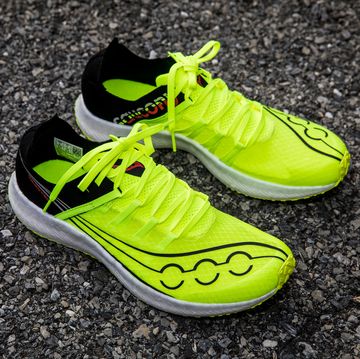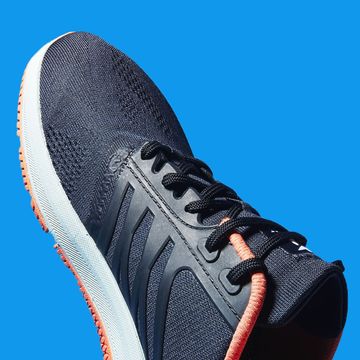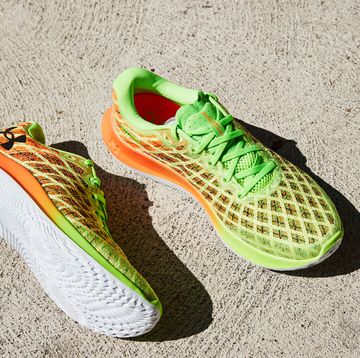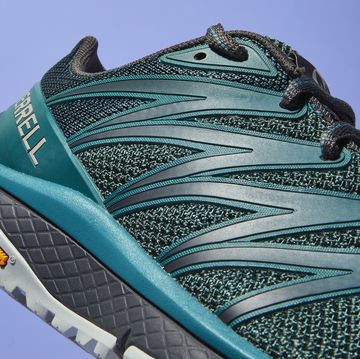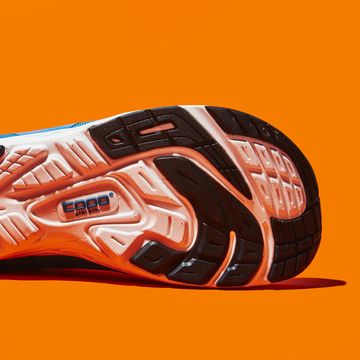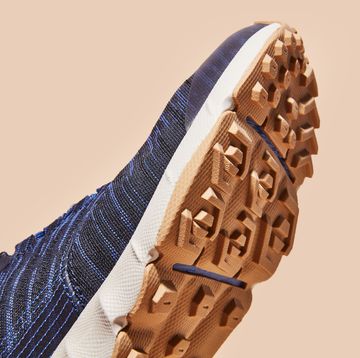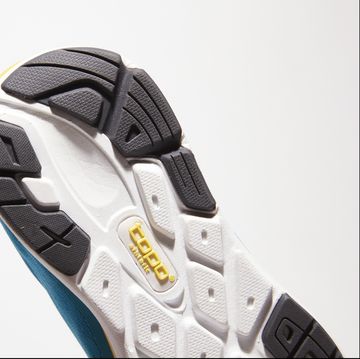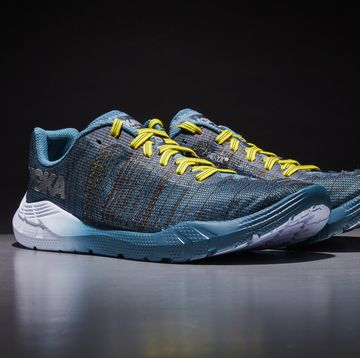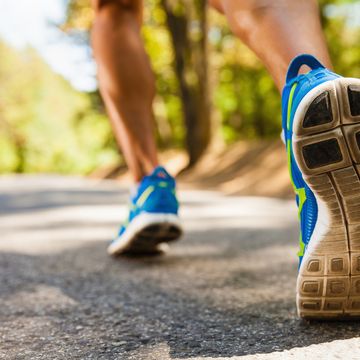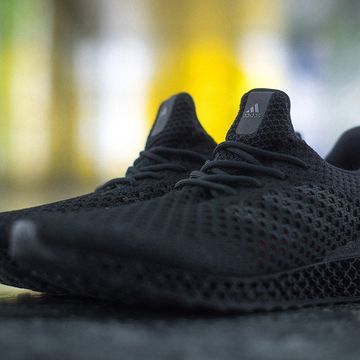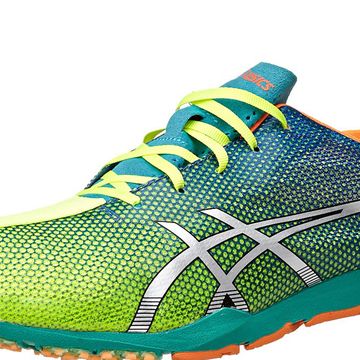If you look at current running shoe offerings, you won’t see much evidence that minimalism and barefoot running were white-hot just a few years back. Most midsoles are high and plush, and even many racing shoes have stability features.
One tenet of minimalist shoe design, however, has become widespread—a relatively low heel-to-toe drop. That’s the difference in the combined height of the midsole and outsole where the back and front of your feet sit in a shoe. Maximalist shoes, such as nearly all Hoka One Ones and most Altras, offer plenty of cushioning, but do so on a flat platform. Many other manufacturers have also retained minimalism’s emphasis on little to no difference between heel and forefoot height (while still offering other models with a conventional heel-to-toe drop of 10-12 millimeters).
Advocates will vouch for minimalism and a lower heel-to-toe drop for other reasons, but does the data back up claims like it will reduce injuries? Here’s what you need to know.
Do Minimalist Shoes Lower Injury Rates?
According to minimalists, one benefit of a low or nonexistent heel-to-toe drop is reduced risk of injury. Shoes with a large drop encourage severe heel striking, it’s said, which might contribute to knee injuries. Advocates of a small heel-to-top drop also say that allowing feet to run more as they would when unshod more evenly distributes impact forces. In addition, minimalists say, being tilted forward by a high heel can throw your body out of alignment and set you up for compensatory injuries.
But a shoe’s drop might not have anything to do with whether you get injured wearing it, suggests a 2016 study published in The American Journal of Sports Medicine.
Researchers at the Luxembourg Institute of Health followed 533 recreational runners for six months while the subjects did all of their running in models with a 0-, 6-, or 10-millimeter drop. The shoes’ respective stack heights were 21 millimeters in the heel and forefoot; 21 millimeters in the heel and 15 millimeters in the forefoot; and 24 millimeters in the heel and 14 millimeters in the forefoot. The shoes were otherwise identical.
With injury defined as a leg or lower-back pain that resulted from running and cut into planned training for at least one day, 25 percent of the runners reported being injured during the six-month study period. The study’s main finding was that injury rates among the three groups were similar—runners got injured at roughly the same rate whether their shoes had a heel-to-toe drop of 0, 6, or 10 millimeters. (A 2017 study also found similar results.)
Does That Mean You Should Avoid Minimal Shoes?
This result doesn’t mean that a shoe’s drop is irrelevant. In 2015, in a review of research on running shoe construction and injury rate, famed biomechanist Benno Nigg found no evidence that shoes change injury patterns.
Nigg has long recommended that runners let what he calls “the preferred movement path” and “the comfort filter” guide shoe choice—roughly stated, how much a shoe feels like an extension of your feet when you run in it. By that standard, some runners will prefer shoes with a high heel-to-toe drop, while others will gravitate toward flatter models.
Are There Still Ways Minimal Shoes Might Help?
In addition, focusing on shoe drop might help runners with specific injury histories, says sport podiatrist Brian Fullem, author of The Runner’s Guide to Healthy Feet and Ankles.
“As a general rule, if someone has forefoot pain such as a neuroma, or arthritic changes in the big toe joint, then I recommend trying a lower-drop shoe. If someone has heel pain from plantar fasciitis or Achilles or posterior tibial tendonitis, then I recommend a more traditional heel drop of 12 millimeters,” Fullem says.
Although the 2016 study found no overall difference in injury rate by shoe drop, there’s an important caveat from the results: Among more frequent runners in the study, those in the low-drop shoes (either 0 or 6 millimeters) had a higher injury rate than the frequent runners in the shoes with a 10-millimeter drop.
“One possible explanation may be that, in regular runners, the transition from their usual running shoes to the low-drop versions was not progressive enough and increased injury risk,” lead researcher Laurent Malisoux told Runner’s World. As Malisoux points out, 78 percent of the subjects hadn’t run in a low-drop shoe before the study, which had some of them suddenly switching to doing all of their running in a low-drop shoe.
“One might expect that runners with a certain amount of running experience yet well-adapted musculoskeletal system are suitable candidates for low-drop shoes, but safe transition could actually require a longer period [than for beginning runners],” Malisoux says.
Bottom Line
Fullem agrees that runners should gradually transition to shoes with a lower drop, including racing flats.
“In the beginning of a competitive season, start doing striders in your racing flats after a run,” he says. “I also recommend transitioning to doing speed sessions in the racing flats. It is very common after the first track, cross-country, or road race of the year to have sore calves if you have not done enough running in the lower-drop shoes.”
Fullem and Malisoux agree that rotating among shoes, including ones with different heel-to-toe drops, is a good strategy for most runners. In 2015, Malisoux published a study that found a lower injury rate over a 22-week period in runners who alternated shoes compared to those who always ran in the same model. “Shoes with different features may lead to a variation of the load applied to the musculoskeletal system,” Malisoux says.

Scott is a veteran running, fitness, and health journalist who has held senior editorial positions at Runner’s World and Running Times. Much of his writing translates sport science research and elite best practices into practical guidance for everyday athletes. He is the author or coauthor of several running books, including Running Is My Therapy, Advanced Marathoning, and Meb for Mortals. Scott has also written about running for Slate, The Atlantic, the Washington Post, and other members of the sedentary media. His lifetime running odometer is past 110,000 miles, but he’s as much in love as ever.



